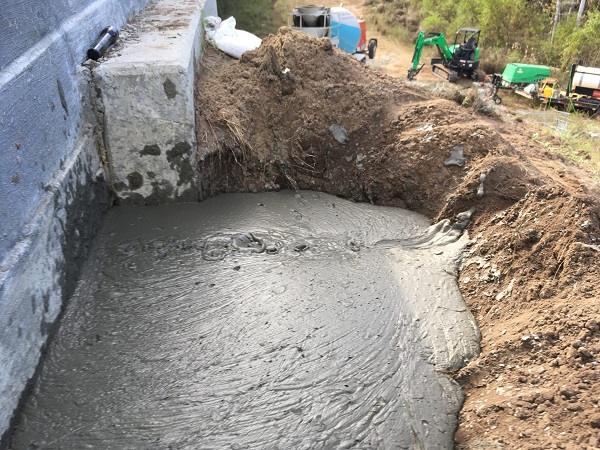Foamed concrete is the most popular of all low-density concretes in developing countries mainly because of its low capital expenditure on equipment and the ready availability of its principal materials, says Bryan Perrie, CEO of Cement & Concrete South Africa (CCSA).
“Foamed concrete can be produced on a small scale, even at the site level, and is relatively easy to place and finish without heavy or expensive equipment. As a result, it has been used as a structural material in schools, apartments and housing developments in Brazil, Singapore, Kuwait, Nigeria, Botswana, Mexico, Indonesia, Libya, Saudi Arabia, Algeria, Iraq and Egypt,” Perrie states.
Foamed concrete is a cementitious material, with a minimum of 20% (per volume) foam entrained into the plastic mortar, but, as no coarse aggregate is used, the term ‘concrete’ is inappropriate, he explains. Instead, it is produced by entrapping numerous tiny air bubbles in cement paste or mortar. Mechanical foaming can take place in two principal ways:
- By pre-foaming a suitable foaming agent with water and then combining the foam with the paste or mortar; and
- By adding a quantity of foaming agent to the slurry and whisking the mixture into a stable mass with the required density. Perrie says the most commonly used foam concentrates are based on protein hydrolyzates or synthetic surfactants. These are formulated to produce air bubbles that are stable enough to and capable of resisting the physical and chemical forces imposed during mixing, placing and hardening.
“Foamed concrete is self-compacting, free-flowing and pumpable and, therefore, easy to place in inaccessible places. In addition, it has good thermal and acoustic properties and is frost resistant. It is, however, too weak for direct exposure to traffic and hail and should be protected by a wearing layer.
“It is standard practice to classify foamed concrete according to its dry density. However, the density is determined from oven-dried specimens. The actual density of foamed concrete would usually be higher than this density as there would generally be evaporable water present in foamed concrete. The presence of water in foamed concrete elements also increases thermal conductivity,” Perrie states.
Since the introduction of concrete cellular systems to the construction industry almost six decades ago, its use has almost exclusively been limited to nonstructural void filling, thermal insulation, acoustic damping, and trench filling for the reinstatement of roads and for building blocks.
In the Netherlands, foamed concrete has been used not only for level corrections in housing developments but also as a fill material where ground subsidence has taken place and as a foundation for road works on fragile soils.
“Historically, foamed concrete has been perceived to be weak and non-durable with high shrinkage characteristics. In addition, unstable foams have in the past resulted in foamed concrete not being suitable for reinforced, structural applications. However, the development of protein-hydrolyzation-based foaming agents and specialized foam generating equipment has improved the stability of the foam, making it possible to manufacture foamed concrete for structural applications.
“But it is important to ensure that the air entrained into the foamed concrete is contained in stable bubbles that remain intact and isolated to ensure that the permeability of the cement paste between the voids is not increased,” Perrie adds.
Also Read
SA cement and concrete industry facing myriad of challenges
Cement & Concrete Additives Sales in Africa/Mideast Region to Grow

